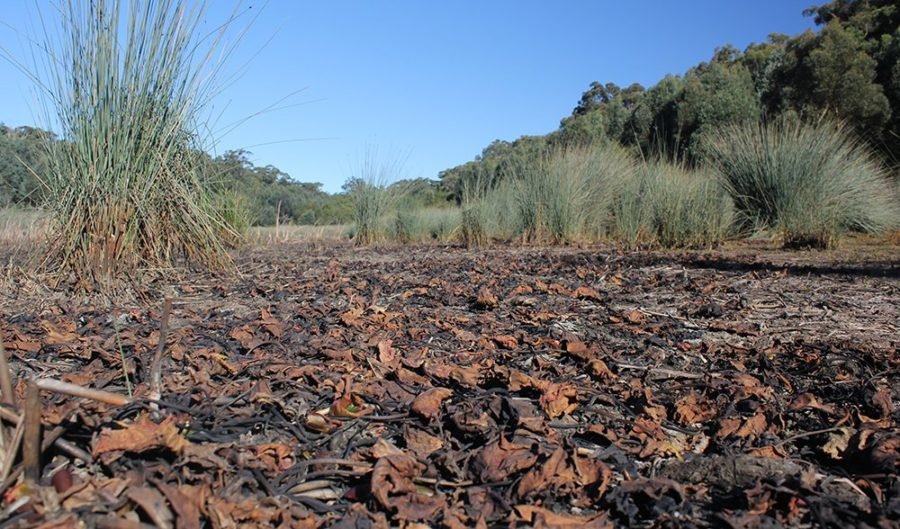Coal mining is behind Thirlmere Lakes drying out

WATER LEVELS IN Thirlmere Lakes began to drop as soon as long-wall coal mining commenced in the area, according to a new report by researchers at the University of New South Wales in Sydney.
The report’s findings contradict a 2013 NSW Government Commission of Inquiry which stated that, “changes in the water levels in Thirlmere Lakes over the past 40 years are due to climatic variations such as droughts and floods.”
The report, published by the UNSW Centre for Ecosystem Science, found that the dropping of water levels coincided with the onset of long-wall coal mining in the mid-1980s, with the lakes having continued to dry out since then.

Stark contrast: swimmers on a jetty in one of the Thirlmere Lakes, January 1989. (Image: David Hunt)
“There has also been a large increase in the number of groundwater bores sunk nearby since the 1980s, although this may have been related to the drying up of the groundwater systems,” said Samira Schädler, an environmental scientist at UNSW, who led the research.
“But we found there was no corresponding change in the rainfall or local climate during that time,” Samira added.
The researchers used data collection to reconstruct the previous level of water in the lakes, also creating three-dimensional models of three of the five lakes in order to solidify the research.

Exposed bed of Lake Courdjah, one of the Thirlmere Lakes. (Image courtesy UNSW)
“Lake levels tracked rainfall patterns for much of the 20th century, until long-wall coal mining and the pumping of groundwater resources in the 1980s,” said Richard Kingsford, Director of the UNSW Centre for Ecosystem Science.
“That’s when you see the start of a dramatic shift and the drying of the lakes, but we did not see any of this in the inflows to our control sites.”
World Heritage in danger
Thirlmere Lakes was included in the UNESCO World Heritage-listed Greater Blue Mountains Area in 2000.
The lakes are believed to have formed from geological activity about 15 million years ago. They are primarily filled by rainwater but also interact with shallow groundwater.
According to the report, groundwater levels in the shallow aquifer declined by up to 40m after mining commenced in 1982, which coincided with an increase in the number of groundwater bores.

Installing instrumentation in a one of the disappearing lakes in 2012. (Image: Philip Pells)
“Long-wall mining and possibly groundwater extraction have compromised the conservation of the lakes,” said Richard, who added that the evidence for recent drying of these habitats was unequivocal.
“There are significant implications for their long-term management and the obligations of governments to this National Park, which is part of the Blue Mountains World Heritage Area,” he said.
The lakes are home to a diverse range of flora and fauna including the grey sedge (Lepironia articulata) and the wooly frogsmouth lily (Philydrum lanuginosum).
“The damage to the ecosystem will not be easily reversed and will be exacerbated by increasing deleterious developments,” said Richard.
READ MORE:
- River on fire: if it’s not coal seam gas, we should still be concerned
- OPINION: Australia’s rivers traded into trouble

